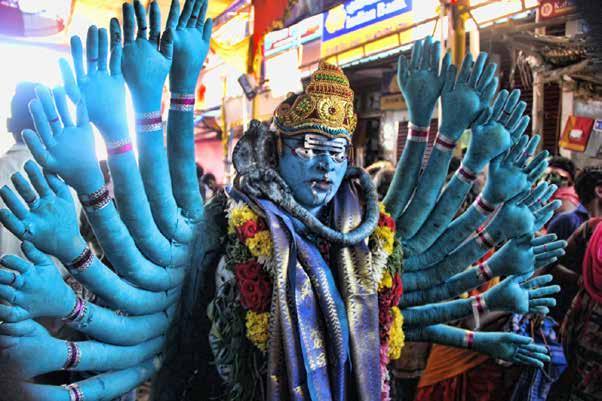

Quwwat ul-Islam Mosque
1190s, Qutb Minar complex, Delhi, India




FROM THE EDITOR'S DESK: WHY NEW YEAR’S RESOLUTIONS MATTER MORE TODAY THAN YESTERYEAR
Have a list of wishes for yourself, and turn them into action. Piles of research show that just dreaming about what you’d like to do, including making resolutions and setting goals, actually reduces the odds that you’ll achieve them. When done correctly, setting goals and making resolutions can shape our behavior for the better.
THE STORY OF A FAMINE THAT KILLED TEN MILLION INDIANS, AND BRITAIN'S GRIP ON THE NEW WORLD
The story of how India helped shape America's destiny. A story that started with tea and ended with Hyder Ali.

A TO Z INDIA magazine covers the Indian through his art, culture, lifestyle, religion, etc. This magazine gives an insight into the life of Indians from an angle uncovered by others. Turn to find out what it is about and to immerse yourself into an entirely different culture.
Publication Team: EDITOR: Indira Srivatsa
ASSOCIATE EDITOR: Dwarak, Srivatsa EDITORIAL CONSULTANTS: Santha, Bhavani, Srinivasan
REPORTING: Raghavan
PHOTOGRAPHY: Adithyan
GRAPHICS ENGINEER: Chandra
Editorial Office: E002, Premier Grihalakshmi Apartments, Elango Nagar South, Virugambakkam, Chennai - 600092, Tamil Nadu, India.
Communication Details: MOBILE: +91-7550160116 e.mail id: editor.indira@gmail.com Disclaimer: A TO Z INDIA Magazine has made a constant care to make sure that content is

From the Editor's Desk:
Why New Year’s Resolutions Matter More Today than Yesteryear
'Goodbye, 2021!', holiday cards announce. What a year! we exclaim to each other. We can’t wait for 2021 to be over. But as we settle into a hard winter, I can’t help wondering: Will 2022

really be any better? With fresh breeze and a new year coming, many are optimistic. But we are not at the end. We are in what I famously call the “messy middle,” where everything is hardest.
When everything went sideways this year, we were collectively freaked out - and also energized. We bravely adjusted to massive changes in the way we work, educate our children, shop, and socialize. But in the midst of crisis, we’re seeing just how little support our society offers to working parents, the unemployed, and many others who are struggling. This is what happens with all big change, and the bigger the change, the more tempted we are to give up, to turn our attention to something shiny or delicious, to seek short-lived hits of pleasure in lieu of long-term meaning.
Research shows that setting specific, difficult goals consistently leads to higher performance (if that’s what you’re after). Where in your life would you like to step things up? Perhaps you’d like set up a gratitude practice, or maybe you’d like to spend less time on social media. Where can you do better despite the odds (and everything else)? The goal is not to add more pressure to an already difficult time, but to identify goals that could help you feel better and have more energy at the end of the day.
Have a list of wishes for yourself, and turn them into action. Piles of research show that just dreaming about what you’d like to do, including making resolutions and setting goals, actually reduces the odds that you’ll achieve them. We also have to make specific plans, map out potential obstacles, and find ways to make the process enjoyable. When done correctly, setting goals and making resolutions can shape our behavior for the better. Our habits can make us feel happier, healthier and more connected to those around us. These are worthy goals in any year, whether we are in a difficult situation or not.
The tomb that exhibits a blend of Hindu & Islamic influences:
Quwwat ul-Islam Mosque, 1190s, Delhi, India
Nitin SharmaQuwwat-ul-Islam Mosque (built 1192-1316)
Quwwat-ul-Islam was sponsored by Qutb-ud-din Aibak, founder of the Mamluk dynasty. Born a slave in Turkey, Qutb rose to prominence as a general during Muhammed Ghari's invasion of India in the 1180s. After Muhammed's assassination in 1206, Qutb seized the throne and crowned himself Sultan of the Mamluk dynasty, often disparagingly called the "Slave Dynasty" after Qutb's origins. Although the dynasty lasted for only a few centuries, Muslim rule in India endured up to the British occuption in 1858.
Qutb was a fanatical Muslim. When his garrison occupied Delhi under the command of Muhammed Ghari in 1192, he ordered the destruction of twenty-seven Hindu and Jain temples to furnish building materials for the construction of Delhi's first mosque. Quwwat-ul-Islam, the "Glory of Islam," was hastily erected by the young Amir, who conscripted an army of local craftsmen, presumably Hindus, to assemble the structure. The Hindu stonemasons repurposed columns from the destroyed temples, but adapting them to use in a mosque proved problematic given Islam's injunction against the use of images in temples. The masons were forced to plaster over the highly sculpted Hindu columns and presumably cover them with geometric designs. However, after centuries of neglect the plaster has fallen away, revealing the original Hindu carvings.





The

The Quwwat-ul-Islam is best known for its tower of victory, celebrating the Muslim conquest of India. It is built of red sandstone, gray quartz, and white marble, but is probably inspired by the iron "Pillar of the Law" that stands on the site. Built in the Mauryan dynasty in the 6th century, it is the only piece of the temple that stands in its original location. Qutb built around it w hen he constructed the mosque. Although made of iron, it has resisted rust for over 1,500 years, evidence of the Mauryan's superb metallurgical skills. Expansion of the mosque continued after the death of Qutb. His son-in-law Altamash (or Illtutmish) extended the original prayer hall screen by three more arches (image 8). By the time of Altamash the Mamluk empire had stablized enough that the Sultan could replace most of his conscripted Hindu masons with Islamic ones. This explains why the arches added under Altamash are stylistically more Islamic than the ones erected under Qutb's rule.

Just to the west of the expanded mosque, Altamash built his own tomb, the first to be erected for the Delhi Sultanate. Despite the presence of Muslim craftsman, the tomb is mostly Hindu in design if not in execution. Much of the superstructure and most of the walls are built of pillaged building material. Altamash's body was laid to rest in a subterranean chamber beneath the tomb.
The decline of Quwwat-ul-Islam began during the rule of Ala-ud-din (1296-1316), known to the West as "Alladin". Ala-ud-din at first seemed inclined to patronize the mosque, even adding an enormous new courtyard wall and erecting the base of a huge new minar (tower). However, Ala-ud-dins dreams were so grand that he decided to abandon the Lal Kot (Delhi) capital and move to nearby Siri, whereupon Quwwatul-Islam lost i ts pre-eminence.


The story of a famine that killed ten million Indians, and Britain's grip on the New World
SanthaIf the stories of Britain's affluence and American independence were boiled down to one single commodity, it has to be the humble ubiquitous tea. Although all of it first came from China, India is where the money to buy it came from. Sometime in the 18th century, this cash cow came down with a famine that killed two things ten million Indians, and Britain's grip on the New World. This story explores how, and much more. Europe stepped into the seventeenth century with an abundance of commercial activities. A vast new world was just opening up for unbridled trade and exploitation. Many were about to get very rich. Europe looked to the East. Britain looked to the West. There were opportunities everywhere. Contrary to popular notion, Britain didn't enjoy a head start on the colonization game. The Dutch were already in on it, as were the Portuguese, the French, and the Spaniards. But now it was determined to catch up. Queen Elizabeth I granted a charter to a group of merchants keen on colonizing the East, more specifically, China and India. What resulted was a monopoly on all British trade in India and East Asia for a company called the London East India Company. This proved wildly successful.
In time, another group of merchants decided to hop on the gravy train and received a charter as the English East India Company. British coffers started bursting at the seams. By the 1700s, the two companies had merged into one as the ‘United Company of Merchants Trading to the East Indies, ’ later renamed the East India Company. Around the same time as the London East India Company, other charters were also given out. These were to companies looking westward. Two of these were the Plymouth Company and the London Company. They were to explore, colonize, and exploit for trade, a whole new world across the Atlantic — America. As we can see, imperialism was a non-government affair those days, left to private businesses with reasonable autonomy.
Soon after receiving their respective charters, the two companies in business with America decided to join hands as the Virginia Company. This is how the American state of Virginia got its name. Back in the day, it was the Colony and Dominion of Virginia. This was the first British territory in the New World. It's here that the first town, a trading outpost, was established. They named it Jamestown, after King James I, the man who granted them their charter. Now, while the Virginia Company got busy colonizing, the East India Company stayed focused on commerce. Their most significant trade was this strange new herb that had been a staple in the Chinese beverage culture since at east 700 AD. They called it tea.
Even then, tea wasn't confined to China. The Arabs and the Russians had been importing it since antiquity thanks to the Silk Route. Even the Dutch were familiar with the beverage and had a steady trading relationship with China through an outpost in Jakarta, then Batavia. But Britain was still new to this. People drank coffee there; nobody knew anything about tea.
That changed in 1662 when King Charles II got himself a new Portuguese bride, Catherine of Braganza. Just like the Dutch, the Portuguese were also familiar with tea and traded extensively in it. Catherine brought with her a precious dowry, the island of Bombay. And she introduced Charles and England to tea. Shortly after that, tea was being actively traded for the British aristocracy.

The Cash Cow which revolutionized the American Revolution:
The story of a famine that killed ten million Indians, and Britain's grip on the New World Santha
Thomas Garraway's coffee house was one of many that lined a street in the city of London called Change Alley. A bustling financial district crawling with stock jobbers, ship chandlers, and goldsmiths, Change Alley was never out of action. Its coffee houses served as the preferred stock-trading hotspots, for there was no formal stock exchange those days. Of these, three were of particular import Lloyd's, Jonathan's, and Garraway's. Lloyd's later evolved into the Lloyd's Register and Jonathan's is where the trading of shares first commenced. Garraway's Coffee-House matters to our story.
Sometime toward the end of the 1660s, Thomas Garraway put out an advertisement inviting "All Persons of Eminence and Quality" to his coffee house to buy a brand new kind of beverage from China at sixty shillings a pound. This was a game-changer. The mysterious elixir from the Orient was meant to cure everything from insomnia to anorexia, and from lethargy to fever. That elixir was tea.
Given its novelty, the commodity was imported in tiny quantities at the time. In 1664, for instance, the East India Company brought home only a shade over two pounds of it. The entire consignment was given away as political presents. Garraway's is credited as the first retail seller of tea and the enterprise proved extremely successful. In less than a century, England would go from coffee to tea. One business made all the money The East India Company. Given its monopoly over all British trades in the region, every ounce of tea that hit British shores came on Company's ships. When Britain entered the eighteenth century, it was consuming well over 45 tons of tea a year. That was just Britain. A whole new market awaited exploitation elsewhere, thanks to the East India Company's western counterpart, the Virginia Company. The colonizers in the New World were slow to adopt tea. Life in America was more demanding than in Europe and tea was an expensive commodity. Some of the early adopters were wealthy plantation magnates and merchants of South Carolina, Virginia, New York, Philadelphia, and Boston. But this changed over the years. By the mid1700s, the average American was guzzling over 120 cups a year.
Sure, all this made the East India Company obscenely rich, but not as much as one would expect. On paper, their monopoly was intact and no tea was reaching England in a boat that wasn't theirs. But the reality was slightly different. There were other players in the arena smugglers. The Company was spending one shilling for a pound of tea in Canton and selling it for about five. But it didn't make three shillings in profits, for two went in taxes. So that left them with barely two shillings in net profits. It was twice the investment but still not a whole lot. They couldn't raise the price beyond four shillings. But tea was much cheaper in Amsterdam and Paris. This meant opportunity; if you could somehow manage to bypass the Company, buy tea from one of these cities, and get it directly into the coffee houses of London. If you did all this without paying any taxes, which is the most likely scenario, you made at the very least, three shillings to a pound. Soon, almost half of all tea in England was smuggled and the Company could do nothing about it. But smuggling wasn't just a European problem. America had its share of undercutting thanks to the "Pirates of the Caribbean." A bigger share, since Americans, being relatively poorer and less discerning as tea connoisseurs, consumed a cheaper kind than their British counterparts. Here, nearly 90 percent of all tea was smuggled. The Company bled.

By this time, having shown the door to the Dutch in the 1674 Treaty of Westminster after the Third AngloDutch War, Britain had long consolidated its hold on the New World. India being the jewel in its crown, America was the quintessential cornucopia of fur, tobacco, sugar, and lots more. But smuggling was still a big problem. The problem only compounded by the middle of the eighteenth century when Europe broke into what one could truly call the first world war in the most technical sense of the term. Just like the more widely-known First World War of 1914, this one also started in Austria with the death of a royal. The year was 1740.
Back then, Austria was part of the Holy Roman Empire ruled by the House of Habsburg. At the helm of this dynasty was Emperor Charles VI. When he died in 1740, he didn't leave a desirable legacy behind. The dead king only had a daughter, Maria Theresa Walburga Amalia Christina, and no sons. Some supported the young princess, and some didn't. The two sides went to war. Maria eventually got her crown, but the war lasted almost a decade and changed history in more ways than possible to speculate. On one side were those that liked her — Britain, Hanover, and the Netherlands, collectively the Pragmatic Allies. On the other were those that didn't France, Prussia, and Bavaria. But the canvas stretched way beyond Europe.
In America, the engagement came to be known as King George's War and was fought between Britain and France. Here, the Colonists and the British, technically both British, teamed up in the summer of 1745 to lay siege to and capture Louisbourg, a French outpost in today’s Nova Scotia. The French tried real hard to recover their losses for almost a year but gave up after losing a commander and many men to bad weather and disease. But since losses must be compensated, they looked elsewhere. An opportunity showed up in India. The British had a small, weakly- fortified garrison at Madras back then. On September 4, 1746, officer Bertrand-Frangois Mahé de La Bourdonnais led a naval squadron to Madras. The first step was a blockade of the port. In less than a week, the garrison surrendered. Madras fell into French hands. This was the first milestone in the Indian theatre of the War of Austrian Succession. On October 18, 1778, Britain, France, and the Netherlands signed the Treaty of Aix-la-Chapelle (today, Aachen in Germany) putting an end to the conflict. Finally, Europe was at peace! Or, was it?
Less than six years after the signing, the two were at each other's throats again, this time entirely in America. But the French weren't Britain's only problem. Their troubles came from within. The Colonists who had wagered life and limb on the heroic capture of Fortress Louisbourg weren't particularly happy about the treaty. It undid all their efforts by re turning the outpost to the French. Although this didn't have any immediate impact, cracks had begun to appear between the Colonists and their British compatriots.
Meanwhile, both Britain and France entered a new race the race to colonize the Great Lakes and the Ohio Valley. Whoever owned the waters, owned the commerce. The maneuvers were fierce and aggressive. This led to the French and Indian War of 1754, which lasted almost a decade. It drove the wedge further between the British and the Colonists. Wars are expensive and this one was prohibitively so. The war destroyed Britain's economy. Wars basically cost two resources men and money. Since the venue was across the
The story of a famine that killed ten million Indians, and Britain's grip on the New World Santha
Atlantic, logistics were a challenge. William Pitt the Elder, the British Paymaster of the Forces, came up with a viable solution. Money being more portable than people, he decided to recruit fighters from amongst the Colonists and ship money from England. This made logistical sense.
Now, the Colonists weren't just British. These were men from all kinds of backgrounds. There were Swedes, Germans, Irish, and Dutch. They all fought as one against a common immediate adversary, the French. This helped forge something unique — A distinct American identity. Many young men were trained by officers of the British army to fight against the French. Among them was a young George Washington. This war ended in crushing defeat for the French with the signing of the 1763 Treaty of Paris. The victory was hard-earned and celebrated in both Britain and America. But the euphoria didn't last. Within years, the rift between the Colonists and the British became prominent. This was primarily over whose role was decisive in the war's outcome. The former felt it was their men who lay their lives in the battlefields; the latter felt it was their hard-earned money that bankrolled the whole enterprise. Being one of the most heavily taxed people in Europe, the British were right in feeling the way they did. The Colonists at the time were barely taxed. There was a sound reason for this tax disparity though. After India, British America was the Empire's biggest cash cow accounting for nearly 40 percent of its GDP. So, low taxation was just a means to keep them from rebelling. But the average British resented this. This problem was further compounded by the absolute ruination of the British economy thanks to the series of expensive wars it fought over the years.
In 1769, a mere six years after the Treaty of Paris, Bengal was visited by a famine that claimed between two and ten million lives in the space of two years. It all started with one failed monsoon which the British administrators didn't take seriously. Instead of stocking up on food supplies for the famine ahead, they resorted to brutal tax terrorism. And if the famine weren't enough, there was small-pox. The epidemic itself claimed more than half a million lives including a Nawab. Large parts of Bengal suffered depopulation as people started abandoning farms. Many took to a life of crime out of desperation and Bengal became a hunting ground for thugs and bandits. This famine would serve as the turning point in the story of America, half a world away. It drove the East India Company to near insolvency. As a bailout, the British Parliament made it a loan of £1.5 million (£270 million in today's money) and an absolute monopoly to sell tea in British American. Besides exempting it from all taxation. This bailout came codified as the Tea Act of 1773, and if the entire American Revolution were to be pinned on one unambiguous flashpoint, this was it.
All tea came from China even though Assam grew its own too. What this means is that while the British just took commodities from India like cotton and spices, tea from China had to be bought with silver. Most of this silver came from selling what was taken from India. That's what made the Bengal Famine pa rticularly devastating for the Empire. When land revenues fell, the East India Company resorted to inhuman means to squeeze out whatever it could from whatever remained. These were desperate times as the Company struggled to pay dividends to its shareholders. India was exploited to absurd lengths. But there's only so much a famine-struck nation could yield, and that's when the Company has to be bailed out.
The story of a famine that killed ten million Indians, and Britain's grip on the New World Santha
The story of a famine that killed ten million Indians, and Britain's grip on the New World Santha
The stories of Company excesses in India eventually reached America. They learned all about how poor farmers were driven to death to keep the Company financially afloat. And they loathed it. If that could happen to India, it could also happen to them! Remember how 90% of all tea entering the American markets was smuggled? Well, the Tea Act put them out of business. It exempted the East India Company from any taxation besides giving it a monopoly over the commodity's trade anywhere in the world. East India Company was a global villain now, one that rallied bitter sentiments on two opposite ends of the world. Pamphlets condemning Company actions went up all over British America. The humble herb from China bought with spoils from India was about to dictate the course of British and American history. Tea was now an active symbol of oppression and tax terrorism. The Boston Tea Party was not exactly a feast, as the name suggests. It was a symbol. An unofficial inauguration of America's defiance. The Boston Tea Party wasn't an isolated event.
Remember the First Carnatic War that ended the War of Austrian Succession? Eight years later, it was followed by a second. This one was India's — more specifically, Hyderabad's — own war of succession. The Nizam had died, and the throne had become a bone of contention between his son and his nephew. One had support from the British, the other from the French. It became a proxy war between the two European powers. The end of this war in 1763 coincided with the end of the French and Indian War on the other side of the globe. And just when the British and the French slugged it out with each other through proxies, a man named Hyder Ali rose into prominence. Ali entered the Second Carnatic War as a Sepoy, and before it ended, he was on the throne of Mysore. The French had a role to play in his stellar ascent and Ali never forgot that. This placed him perpetually at odds with the British East India Company. France's association with Ali was part of a bigger plan. We've already seen how the French and Indian War broke Britain's economy. But it also broke the French. To remedy this, Louis XV needed friends. So he set out to build a global network of allies. The idea was to bleed Britain through a million paper cuts, in this case, proxy wars. One such ally was Ali.
Now, although all ground engagements were off, the waters remained British. The Americans needed money that could only come from international commerce. Commerce that could only happen through its harbors. These harbors were still under an impenetrable British blockade. That changed on April 8, 1782. Philadelphia merchants were losing many ships to the Royal Navy and Crown privateers waiting in ambush at the mouth of Delaware Bay near Cape May. So, they agreed to put together a fund to buy a sloop, a small squarerigged sailboat with two or three masts, and rig it up for battle. They named it Hyder Ally and put it under the command of a 23-year-old Captain Joshua Barney. On April 8, 1782, Captain Barney commanded Hyder Ally into the Delaware Bay to take on a much larger and heavily-armored British vessel, HMS General Monk. What Captain Barney scored that day was America's first naval victory against what was then the world's most formidable navy. Philadelphia celebrated this with parades and ballads to Ali in the streets. Ali succumbed to cancer while fighting the British later that year. On September 3, 1783, facilitated by France, the two belligerents signed a Treaty of Paris recognizing the United States of America as a sovereign nation. Yes, that's the actual date of American independence — September 3, 1783, not July 4, 1776. So, this was the story of how India helped shape America's destiny. A story that started with tea and ended with Hyder Ali, a Muslim king who once died fighting the British Empire.
Jay Jagannath, Jagannath Puri Temple, Odisha
Byanjana Dwadashi
Lekhani SebakaContent provided by T.K.V. Karuna e.mail id: tkvkaruna@gmail.com
In an extravagant affair, as many as 555 dishes are offered to the deities of Lord Jagannath, Balabhadra and Devi Subhadra on the occasion of Byanjan Dwadashi at the Gourabihar mutt in Odisha’s holy town Puri.
Byanjana Dwadashi:
Byanjan Dwadashi is observed on the 12th day of t Hindu calendar. It is believed that on this day Mo Krishna.
“Hundreds of devotees of Lord Jagannath come together and prepare these dishes at the mutt. 555 dishes are prepared and offered to Lord Jagannath and his siblings as well as Radha and Krishna. The dishes included a number of preparations made of rice, pulses and vegetables. After offering the dishes to the deities, it is served to the devotees”.


The special feature of Byanjan Dwadashi at Gourbihar mutt is that every year more items are added to the menu.
Ancient
Hello everyone... My first article on this magazine starting with an unknown historic site... Everyone has heard about Markandeya Hill in Vokkaleri. But this hill is just nearby to Markandeya Hill, known as Bili Betta (meaning white hill).
Bili Betta is located near Markandeya Hill, Vokkaleri, Kolar District, Karnataka. Bili Betta is related to the Ramayana epic. The author of Ramayana, Rishi Valmiki had conducted his routine rituals here. With the help of ashes from the ritual he conducted (Yagna), Rishi Valmiki drew a picture of Lord Anjaneyaswamy on the rock located there. This picture is said to have developed into an idol by the rishi's penance and yagna. Currently, there is Anjaneyaswamy Temple located on the hill. The idol is believed to be more than 6000 years old.
There are two water retain ing sites on the hill named Rama theertha and Lakshmana theertha. These are said to have been used by the great Sage Valmiki.


 Bili Betta, near Markandeya Hill, Vokkaleri, Kolar District, Karnataka Kusal
Bili Betta, near Markandeya Hill, Vokkaleri, Kolar District, Karnataka Kusal
தரிசிகக வநதனர.
தநத ஈசவரன, ேம�ம �றலானார:
கஙைகக� நிகரான காவிரியில நரா�னா�ம, தரிசிததா�ம, அதைன பகதியடன
அதன கைரயில தானம, தரபபணம ெசயதா�ம


ஒ� �ழநைதைய
அவனிடம
அகஸததிய �னிவைரக கணட காேவரியானவள,
ஆவார என� நிைனத�, ேலாபா�தரா எனற ெபய�டன அவைர தி�மணம
அவள வி�மபியப�ேய, நதி �பமாகி, பிற நதிக�க�ம
ஏறபடட பாவஙகைள நககவம, ேமா�தைத அளிககவம
திக�மா�, அகஸதய

நரா�, �னேனாரக�க�
அளிததால பித�ககள மகிழந� வாழத�வாரகள. அழ�, ஆயள, ஆேராககியம, ெசாலவளம, கலவி, வாழவில �கம என எலலாம கிட�ெமன� �லாக காேவரி மகாதமியம ��கிற�.
ஆதி, இைட, கைட என�ம �ன� அரஙகஙகைளயம தனனகதேத
இைறவன நாராயணனின தி�வ�ையத
ேப�ம ெப�ைமயம தனனிகரறற�. தடசிணகஙைக என� ேபாறறபப�ம காேவரிக� ெபானனி, விதிசம�ைத, கலயாணி, சாமதாயினி, கலியாண தரதத�பி, உேலாப�தரா, �வாசாஸயாமா, �மபசமபவ வலலைவ, விண�மாைய, ேகானிமாதா, தககணபதசாவணி என பல ெபயரகள உளளன.
�லா ஸநானம ெசய�

�தல ேததி தி�சசிக� அ�கி�ளள தி�பபராயத�ைறயி�ம, இரணடாவ� நராடைல ஸரரஙகம அமமா மணடபம ப�த�ைறயி�ம, கைடசி ேததியன� மயிலா��ைற நநதிக கடடததி�ம ��க�ப ேபாட ேவண�ம எனப� ஐதகம. தைலககாேவரி, ராமபரம, ஸரரஙகம, தி�பபராயத�ைற, தி�வாைனககாவல, சபதஸதானம, தி�ைவயா�, பஷபாரணயம, தி�சசாயககா�, தி�ெவணகா�, மயிலா��ைற, �மபேகாணம, தி�விைடம���ர �தலிய காேவரி


Facts about Shape of the Deities at Puri Temple
Lekhani Sebaka
Content provided by T.K.V. Karuna e.mail id: tkvkaruna@gmail.com
When Lord Shri Krishna died of penetration of an arrow thrown by Jara Shabara (the tribal chief) His body was cremated near the sea (now known as Swarga Dwara) but the Naval portion (Nabhi Manadala) did not burn. Hence, that was floated in the sea.
After that Kali Yuga started and the thrown away portion reached Puri in shape of Daru or Wood log according to Rig Veda.
Then king Indradyumna was directed through a dream (Swapnadesha) to fetch the Daru for worship in a temple. The king wanted to prepare the images

of trinity through the services of the Biswakarma (the Devine carpenter).
Biswakarma agreed to the service in the condition that he would be allowed to work in a closed room for 21 days and the door should not be opened before the stipulated time.
One day the King, provoked by the queen became curious to verify the fact as there was no sound after some days.
Surprisingly the King discovered the carpenter absent in the locked room leaving the idols half

Jay Jagannath, Jagannath Puri Temple, Odisha
Facts about Shape of the Deities at Puri Temple
Lekhani Sebaka
Content provided by T.K.V. Karuna e.mail id: tkvkaruna@gmail.com
built, half made.
King Indradyumna cursed himself and the queen for this act and became disheartened. Then suddenly he heard the voice of the Almighty (Sunya Bani) that I myself wished to be in this shape in Kaliyuga.

After many years according to Madala Panji (record of Rights), Rakta Bahu attacked Puri Jagannath temple. So during that time, the Sebayats had carried away the images of the deities to a city called Sonepur and hide it there by burying it underground. (Pattali Leela)
King Jajati Keshari of Somavansh Dynasty had brought the deities back from Sonepur after 144 years and built the new Idols according to classical principles and the Brahma Transformation was also done.

It may be concluded that the first Nabakalebara (Replacement of old idols with new ones) had been performed in the tenth century. Though it's a very old and ancient tradition, unfortunately records have been lost or not kept about Nabakalebara over many centuries.
As per the verifiable records to be found in the Jagannath Temple, the first Nabakalebara had been performed in 1574.

History has remained silent regarding the maiden commencement of Nabakalebara and as such there is no consensus among historians and scholars.
Tunganathji Temple, Rudraprayag district, India
Sridhar
One of the highest among five Panch Kedar temples located in Rudraprayag district, at an altitude of 11,385 feet.
The temple lies about 2 km below the Chandrashila Peak (12,106 ft)). From the top of this peak, picturesque views of the Himalayan range comprising snow peaks of Nanda Devi, Panch Chulli, Banderpoonch, Kedarnath, Chaukha mba, Neelkanth on one side, and the Garhwal valley on the opposite side could be witnessed.
The valley between Chopta and Tunganath temple has wooded hills with rich alpine meadows with rhododendron and agricultural fields. The rhododendrons, in full bloom during March, display dazzling colours.

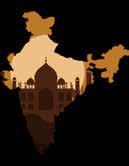
Incredible India: mages of India hrough aintwork





Incredible India: mages of India hrough aintwork





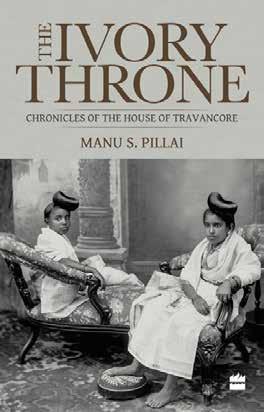

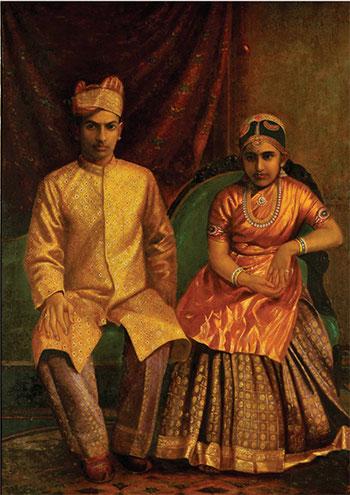
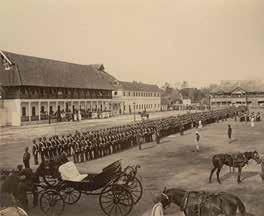






 The Dusshera festival of Kulasekarapattinam
The Dusshera festival of Kulasekarapattinam
